The Nature of Design: Ecology, Culture, and Human Intention
By
David W. Orr
About The Author
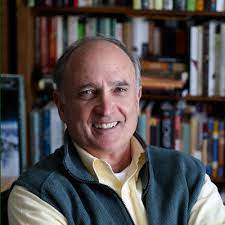 David W. Orr is Professor and Chair of the Environmental Studies Program at Oberlin College. He is the author of Ecological Literacy and Earth in Mind and more than 100 published articles. Among other awards, he is a Lyndhurst Prize fellow and recipient of the National Wildlife Federation’s National Achievement Award.
David W. Orr is Professor and Chair of the Environmental Studies Program at Oberlin College. He is the author of Ecological Literacy and Earth in Mind and more than 100 published articles. Among other awards, he is a Lyndhurst Prize fellow and recipient of the National Wildlife Federation’s National Achievement Award.
About The Book
The environmental movement has often been accused of being overly negative – trying to stop “progress”. The Nature of Design, on the other hand, is about starting things, specifically an ecological design revolution that changes how we provide food, shelter, energy, materials, livelihood, and deal with waste. Ecological design is an emerging field aiming to recalibrate what humans do in the world with how the world works as a biophysical system. Design in this sense is a large concept having to do as much with politics and ethics as with buildings and technology.
The book begins by describing the scope of design, comparing it to the Enlightenment of the 18th century. Subsequent chapters describe barriers to a design revolution inherent in our misuse of language, the clock-speed of technological society, and short-sighted politics. Orr goes on to describe the critical role educational institutions might play in foster design intelligence and what he callsa higher order of heroism.
Appropriately, the book ends on themes of clarity, wilderness, and the rights of children. Astute yet broadly appealing, The Nature of Design combines theory, practicality, and a call to action.
Praise for The Nature of Design
“In this new book David Orr teaches us to look at human design in radically new ways. He shows that most of our ecological problems result from design failures and makes an eloquent and passionate plea for designing “with ecology in mind”. This is a brilliant and inspiring book – essential reading for all who are concerned about the future of humanity.
Fritjof Capra, Author of The Web of Life
“David is a philosopher par excellence with an encyclopaedic command of the literature of conservation and a brutally analytic approach to the successes and failures of the current status of the industrialized world. He writes with a remarkable command of the language, with humor, and occasional sarcasm. His message is that the world is not working and that its repair requires a new set of rules which are the core of the new conservatism.”
George M. Woodwell, Director, Woods Hole Research Center
“If you are looking for a warm glow because you recycled your tin cans and sent a cheque to the Sierra Club, you better pick another book. These are urgent, impatient, absolutely realistic essays by one of the country’s most important environmentalists, someone who walks the talk in every way. They explain what must be done, and better yet they explain how it canbe done, leaving an implicit challenge for all of us.”
Bill McKibben, author of The End of Nature
The Problem of Ecological Design
Conservation and Conservatism
The philosophy of free market conservatism has swept the political field virtually everywhere and virtually everywhere conservatives have been, in varying degrees, hostile to the cause of conservation. This is a problem of great consequence for the long-term human prospect because of the sheer political power of conservative governments. Conservatism and conservation share more than a common linguistic heritage. Consistently applied they are, in fact, natural allies. To make such a case, however, it is necessary first to say what conservatism is.
Conservative philosopher Russell Kirk (1982, xv-xvii) proposes six “first principles” of conservatism. Accordingly, true conservatives:
- believe in a transcendent moral order
- prefer social continuity (i.e., the “devil they know to the devil they don’t know”)
- believe in “the wisdom of our ancestors”
- are guided by prudence
- “feel affection for the proliferating intricacy of long-established social institutions”
- believe that “human nature suffers irremediably from certain faults”

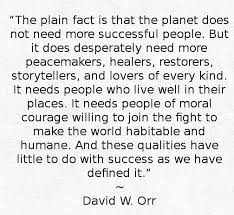 For Kirk the essence of conservatism is the “love of order” (1982, xxxvi). Eighteenth-century British philosopher and statesman, Edmund Burke, the founding father of modern conservatism and as much admired as he is unread, defined the goal of order more specifically as one which harmonized the distant past with the distant future. To this end Burke thought in terms of a contract, but not one about “things subservient only to the gross animal existence of a temporary and perishable nature.” Byurke’s societal contract was not, in other words, about tax breaks for those who don’t need them, but about a partnership promoting science, art, virtue, and perfection, none of which could be achieved by a single generation without veneration for the past and a healthy regard for those to follow. Burke’s contract, there, was between “those who are living, those who are dead, and those who are to be born…linking the lower with the higher natures, connecting the visible and invisible world” ((1790) 1986, 194-195). The role of government, those “possessing any portion of power,” in Burke’s words, “ought to be strongly and awefully impressed with the idea that they act in trust” (ibid., 1990). For Burke, liberty in this contractual state was “not solitary, unconnected, individual, selfish Liberty. As if every man was to regulate the whole of his conduct by his own will.” Rather he defined liberty as “social freedom. It is that state of things in which liberty is secured by the equality of restraint” (quoted in O’Brien, 1992, 390).
For Kirk the essence of conservatism is the “love of order” (1982, xxxvi). Eighteenth-century British philosopher and statesman, Edmund Burke, the founding father of modern conservatism and as much admired as he is unread, defined the goal of order more specifically as one which harmonized the distant past with the distant future. To this end Burke thought in terms of a contract, but not one about “things subservient only to the gross animal existence of a temporary and perishable nature.” Byurke’s societal contract was not, in other words, about tax breaks for those who don’t need them, but about a partnership promoting science, art, virtue, and perfection, none of which could be achieved by a single generation without veneration for the past and a healthy regard for those to follow. Burke’s contract, there, was between “those who are living, those who are dead, and those who are to be born…linking the lower with the higher natures, connecting the visible and invisible world” ((1790) 1986, 194-195). The role of government, those “possessing any portion of power,” in Burke’s words, “ought to be strongly and awefully impressed with the idea that they act in trust” (ibid., 1990). For Burke, liberty in this contractual state was “not solitary, unconnected, individual, selfish Liberty. As if every man was to regulate the whole of his conduct by his own will.” Rather he defined liberty as “social freedom. It is that state of things in which liberty is secured by the equality of restraint” (quoted in O’Brien, 1992, 390).
As the ecological shadow of present over future generations has lengthened, the wisdom of Burke’s concern for the welfare of future generations has become more evident. Moreover, if conservatism means anything at all other than the preservation of the rules by which one class enriches itself at the expense of another, it means the conservation of what Burke called “an entailed inheritance derived to us from out forefathers, and to be transmitted to our posterity; as an estate belonging to the people” (Burke (1790) 1986, 199). Were Burke alive today, there can be no doubt he would agree that this inheritance must include not only the laws, traditions, and customs of society, but also the ecological foundations on which law, tradition, custom, and public order inevitably depend. A society that will not conserve its topsoil cannot preserve social order for long. A society that wastes its natural heritage like a spendthrift heir can build only the most fleeting prosperity, leaving all who follow in perpetual misery. And those societies that disrupt the earth’s biochemical balances and destroy its biota are the most radical of all. If not restrained, they could force all thereafter to live in an ecological ruin and impoverishment that we can hardly imagine.
In light of Burke’s view that society is a contract between the living and the dead, and those to be born, what can be said about the conservatism of contemporary conservatives? What, for instance, is conservative and conservatives’ support for below market-cost grazing fees that federal agencies charge ranchers for their use of public lands? Welfare for ranchers runs against conservatives’ supposed antipathy to handouts for anyone. But that’s a quibble. The more serious issue concerns the ecological effects of overgrazing which result from underpricing the use of public lands. Throughout much of the American West, the damage to the ecology of fragile ecosystems is serious and increasing, with worse yet to come. In a matter of decades these trends will jeopardize a way of life and a ranching economy that can be sustained for future generations only by astute husbandry of soils, wildlife, and biota of arid regions. The ruin now being visited on a large part of public lands for a short-lived gain for a few is a breach of trust with the future. There is nothing whatsoever conservative about a system that helps those who do not need it while failing to sustain the ecological basis for a ranching economy into the distant future.

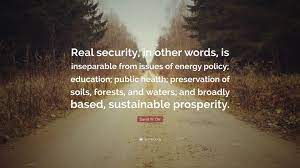 What is conservative about the ongoing support many conservatives give to the Mining Law of 1872? That piece of archaic legislative banditry permits the destruction and looting of public lands in the service of private greed while requiring little or nothing in return. The result – economic profligacy and ecological ruin – meets no conceivable test of genuine conservative ideals and philosophy. It is theft on a grand scale, permitted because of the political power of those doing the looting and the cowardice and shortsightedness of those doing the governing.
What is conservative about the ongoing support many conservatives give to the Mining Law of 1872? That piece of archaic legislative banditry permits the destruction and looting of public lands in the service of private greed while requiring little or nothing in return. The result – economic profligacy and ecological ruin – meets no conceivable test of genuine conservative ideals and philosophy. It is theft on a grand scale, permitted because of the political power of those doing the looting and the cowardice and shortsightedness of those doing the governing.
What is conservative about getting government off the backs of citizens while leaving corporations there? Burke, who had a healthy dislike for all abuses of power, would have wanted all tyranny curtailed including that of corporations. How do price increases, for example, differ from tax increases? How do cancers caused by toxic emissions or deaths resulting from safety defects in automobiles differ from unjust executions? How does the ability of capital to abandon one community for another that it can exploit more thoroughly differ from government mismanagement? To those who suffer the consequences, such differences are largely academic. The point is lost, nonetheless, on most contemporary conservatives who often detect the sins of government in parts-per-billion while overlooking corporate malfeasance by the ton. Burke, in our time, would not have been so negligent about economic tyranny.
What is conservative about squandering for all time our biological heritage under the guise of protecting temporary property rights? Conservatives have long scorned public efforts, meagre as they are, to protect endangered species because, on occasion, doing so may infringe on the ability of property owners to enrich themselves. Any restrictions on private property use, even those which are beneficial to the public and in the interest of posterity, they regard as an unlawful taking of property. But this view of property rights finds little defence in a careful reading of either John Locke, from whom we’ve derived much of our land-use law and philosophy (Caldwell and Shrader-Frenchette 1993), or in the writings of Burke. For Locke, property rights were valid only as long as they did not infringe on the rights of others to have “enough and as good” ((1690)) 1963, 329). It is reasonable to believe that this ought to include the rights of future generations to a biota as abundant and as good as that which sustained earlier generations. And for Locke, “nothing was made by God for Man to spoil or destroy” (ibid., 332), a concept that has not yet been fully noted by many conservatives. The point is that Locke did not regard property rights as absolute even in a world with a total population of less than 1 billion, and neither should we in a world of 6.3 billion and rising.
What’s conservative about a quarter century of opposition to national efforts to promote energy and resource efficiency? Even on narrow economic grounds, efficiency has been shown to be economically advantageous. The fact that the United States is far less efficient in its use of energy than Japan and Germany, for instance, places it at a competitive disadvantage estimated to be between 5 and 8 percent for comparable goods and services. Economics aside, energy and resource profligacy is the driving force behind climatic change and the sharp decline in biological diversity worldwide. Nothing could be more deleterious to the interests of future generations than for this generation to leave behind an unstable climate and the possibility that those changes might be rapid and self-reinforcing. And short of nuclear war, no act by the present generation would constitute a greater dereliction of duty or breach of trust with its descendants.
The willingness of many conservatives to accept the risk of catastrophic and irreversible global changes that would undermine the well-being of future generations is a profoundly imprudent precedent. We have no right to run such risks when the consequences will fall most heavily on those who can have no part in making the choice.

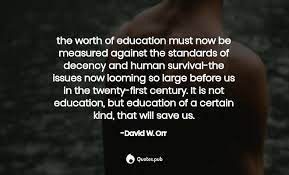 What is conservative about the extension of market philosophy and narrow economic standards into the realm of public policy? Many conservatives want to make government work just like business works. Government certainly ought to do its work efficiently, often much more efficiently than it does now. That much is common sense, but it is a far cry from believing that public affairs can be conducted as a business or that economic efficiency alone is an adequate substitute for farsighted public policy. Many good things, including compassion, justice, human dignity, environmental quality, the preservation of natural areas and wildlife, art, poetry, music, libraries, stable communities, education, and public spiritedness can never meet a narrow test of profitability, nor should they be required to do so. This too, is common sense. These things are good in and of themselves and should not be subject to the same standards used for selling beer and automobiles.
What is conservative about the extension of market philosophy and narrow economic standards into the realm of public policy? Many conservatives want to make government work just like business works. Government certainly ought to do its work efficiently, often much more efficiently than it does now. That much is common sense, but it is a far cry from believing that public affairs can be conducted as a business or that economic efficiency alone is an adequate substitute for farsighted public policy. Many good things, including compassion, justice, human dignity, environmental quality, the preservation of natural areas and wildlife, art, poetry, music, libraries, stable communities, education, and public spiritedness can never meet a narrow test of profitability, nor should they be required to do so. This too, is common sense. These things are good in and of themselves and should not be subject to the same standards used for selling beer and automobiles.
What is conservative about perpetual economic growth? Economic expansion has become the most radicalizing force for change in the modern world. Given enough time, it will first cheapen and then destroy the legacy we pass on to the future. The economic results of economic growth at it’s present scale and velocity are pollution, resource exhaustion, climatic instability, and biotic impoverishment. Uncontrolled economic growth destroys communities, traditions and cultural diversity. And through the sophisticated cultivation of the seven deadly sins of pride, envy, anger, sloth, avarice, gluttony and lust, economic growth destroys the character and virtues of the people whose wants it purports to satisfy.
Conservative (and liberals) have been unwilling to confront the difference between growth and real prosperity and to tally up the full costs of growth for our descendants. In the words of former Reagan administration Defence Department official Fred Ikle, “growth utopianism is a gigantic global Ponzi scheme (leading to) collapse, engulfing everyone in it’s misery” (1994, 44). Ikle continues to say that the cause of this collapse would not be a shortage of material goods but the destruction of society’s conservative conscience by our Jacobins of growth.
The conservatives, by and large, have been deeply hostile to evidence of ecological deterioration and to the cause of conservation and are profoundly unconservative. A genuine and consistent conservatism would aim to conserve the biological and ecological foundations of social order and pass both on as part of “an entailed inheritance derived to us from our forefathers and to be transmitted to our posterity” (Burke (1790) 1986, 119). If words mean anything, there can be no other standard for an authentic conservatism.
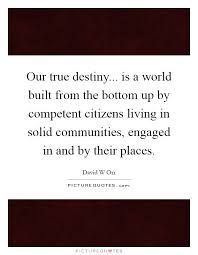
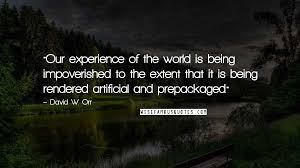 Like that defined in Kirk’s first principles, a genuine conservatism is grounded in the belief in a transcendent moral order in which our proper role is that of trustees subject to higher authority. It would honour and respect the need for both social and ecological continuity. It would repect the wisdom of past and also the biological wisdom contained in the past millions of years of evolution. A genuine conservatism would prudently avoid jeopardizing our legacy to future generations for any reason of temporary economic advantage. It would eschew cultural and technological homogeneity and conserve diversity of all kinds. And a genuine conservatism, chastened by the recognition of human imperfection, would not create technological, economic and social conditions in which imperfect and ignorant humans might wreak ecological havoc.
Like that defined in Kirk’s first principles, a genuine conservatism is grounded in the belief in a transcendent moral order in which our proper role is that of trustees subject to higher authority. It would honour and respect the need for both social and ecological continuity. It would repect the wisdom of past and also the biological wisdom contained in the past millions of years of evolution. A genuine conservatism would prudently avoid jeopardizing our legacy to future generations for any reason of temporary economic advantage. It would eschew cultural and technological homogeneity and conserve diversity of all kinds. And a genuine conservatism, chastened by the recognition of human imperfection, would not create technological, economic and social conditions in which imperfect and ignorant humans might wreak ecological havoc.
An authentic conservatism has much to offer in the cause of conservation. Conservatives are right that markets, under some circumstances, can be more effective tools for conservation than government regulation. The conservative dislike of unwarranted taxation might be the basis to shift taxes from things we want, such as income, profit, and labour, to things we do not want such as pollution and energy and resource inefficiency (von Weiszacker and Jesinghaus, 1994). An authentic conservatism would encourage a sense of discipline, frugality, and thrift in the recognition that “men are qualified for civil liberty in exact proportion to their disposition to put moral chains on their own appetites…Society cannot exist unless a controlling power upon will and appetite be placed somewhere, and the less of it there is within, the more there is without. It is ordained in the eternal constitution of things, that men of intemperate minds cannot be free. Their passions forge their fetters” (Burke, quoted in epigraph to Ophuls, 1992). A genuine conservatism would provide the philosophical bases and political arguments for prudence, precaution, and prevention in public policy and law. And a genuine conservatism would recognize that avoidance of some tragedies requires “mutual coercion, mutually agreed upon” (Hardin 1968, 12), which, in turn, requires robust democratic institutions.
Introduction: The Design of Culture and the Culture of Design
Environmentalists are often regarded as people wanting to stop one thing or another, and there are surely lots of things that ought to be stopped. The essays in this book, however, have to do with beginnings. How, for example, do we advance a long-delayed solar revolution? Or begin one in forest management? Or materials use? How do we re-imagine and remake the human presence on earth in ways that work over the long haul? Such questions are the heart of what theologian Thomas Berry (1999) calls “the Great Work” of our age. This endeavour is nothing less than the effort to harmonize the human enterprise with how the world works as a physical system and how it ought to work as a moral system. In the past two centuries the human footprint on earth has multiplied many times over. Our science 
 and technology are powerful beyond anything imagined by the confident founders of the modern world. But our sense of proportion and depth of purpose have not kept pace with our merely technical abilities. Our institutions and organizations still reflect their origins in another time and in very different conditions. Incoherence, disorder, and violence are the hallmarks of the modern world. If we are to build a better world – one that can be sustained ecologically and one that sustains us spiritually – we must transcend the disorder and fragmentation of the industrial age. We need a perspective that joins the hard won victories of civilization, such as human rights and democracy, with a larger view of our place in the cosmos – what Berry calls “the universe story”. By whatever name, that philosophy must connect us to life, to each other, and to generations to come. It must help us to rise above sectarianism of all kinds and the puffery that puts human interests at a particular time at the centre of all value and meaning. When we get it right, that larger, ecologically informed enlightenment will upset comfortable philosophies that underlie the modern world in the same way that the Enlightenment of the Eighteenth century upset medieval hierarchies of church and monarchy.
and technology are powerful beyond anything imagined by the confident founders of the modern world. But our sense of proportion and depth of purpose have not kept pace with our merely technical abilities. Our institutions and organizations still reflect their origins in another time and in very different conditions. Incoherence, disorder, and violence are the hallmarks of the modern world. If we are to build a better world – one that can be sustained ecologically and one that sustains us spiritually – we must transcend the disorder and fragmentation of the industrial age. We need a perspective that joins the hard won victories of civilization, such as human rights and democracy, with a larger view of our place in the cosmos – what Berry calls “the universe story”. By whatever name, that philosophy must connect us to life, to each other, and to generations to come. It must help us to rise above sectarianism of all kinds and the puffery that puts human interests at a particular time at the centre of all value and meaning. When we get it right, that larger, ecologically informed enlightenment will upset comfortable philosophies that underlie the modern world in the same way that the Enlightenment of the Eighteenth century upset medieval hierarchies of church and monarchy.
The foundation for ecological enlightenment is the 3.8 billion years of evolution. The story of evolution is a story of design strategies as life in all of its variety evolved in a vast efflorescence of biological creativity. The great conceit of the industrial world is the belief that we are exempt from the laws that govern the rest of creation. Nature in that view is something to be overcome and subordinated. Designing with nature, on the other hand, disciplines human intentions with the growing knowledge of how the world works as a physical system. The goal is not total mastery but harmony that causes no ugliness , human or ecological, somewhere else or at some later time. And it is not just about making things, but rather remaking the human presence in the world in a way that honours life and protects human dignity. Ecological design is a large concept that joins science and the practical arts with ethics, politics, and economics.
In one way or another all of the important questions of our age have to do with how we get on with the Great Work, transforming human activity on the earth from destruction to participation and human attitudes towards nature from a kind of autism to a complete reverence. It would be foolish to think that what has taken several centuries or longer can be undone quickly or even entirely. But it would also be the height of folly to continue on our present course or to conclude that we are doomed and to give up hope. For most of us the Great Work must begin where we are, in the small acts of everyday life, stitching together a pattern of loyalty and faithfulness to a higher order of being. The hallmarks of those engaged in Great work everywhere must be largeness of heart, breadth of perspective, practical competence, moral stamina, and the kind of intelligence that discerns ecological patterns.
This is a tall order, but we have a heritage of ecological design intelligence available to us if we are willing to draw on it. The starting point for ecological design is not some mythical past, but the heritage of design intelligence evident in many places, times and cultures prior to our own. We don’t need to reinvent wheels. Hat we need in the decades ahead is to rediscover and synthesize, as well as invent. Let me illustrate with four examples.

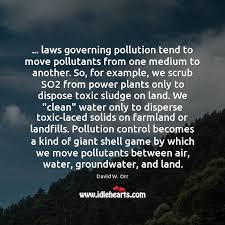 Several days after the bombing of the Murrah Federal Building in Oklahoma City in 1995, an Amish friend of mine with a well-developed sense of humour called from a pay phone to inform me that no Amish person was involved in the crime. I responded by saying that I was not particularly surprised. “Good,” he replied, “ I just wanted to clarify that in your mind.” After a pause he added: “You know if the Amish were involved, the getaway buggy would have been blown up.”
Several days after the bombing of the Murrah Federal Building in Oklahoma City in 1995, an Amish friend of mine with a well-developed sense of humour called from a pay phone to inform me that no Amish person was involved in the crime. I responded by saying that I was not particularly surprised. “Good,” he replied, “ I just wanted to clarify that in your mind.” After a pause he added: “You know if the Amish were involved, the getaway buggy would have been blown up.”
My friend usually has a point to make. This time it was simply a humorous way of saying that if the horse is your primary mode of transportation, there are some things you cannot do. Whatever malice may be hidden in the heart, the speed and power of the horse sets limits to the havoc one can cause. If the horse is your primary form of transportation, you cannot haul enough diesel and fertilizer to blow up large buildings, and you could not escape the ensuing destruction anyway. A horse-drawn buggy has about a radius of eight miles in hilly country, and if you have chores to finish by suppertime, you cannot conveniently shop until you drop. The use of draft animals also limits the amount of land one can farm, which, in turn, limits the desire to take over a neighbours farm.
In Amish culture, in other words, the horse functions like a mechanical governor on a machine. People in industrial culture, on the other hand, have no functional equivalent of the horse and accept few limits beyond those of what is assumed to be cost-effectiveness. The Amish and most traditional cultures can sustain themselves indefinitely within the ecological limits of their regions. They contribute little or nothing to climate change, cancer rates, and the loss of biodiversity, and are invulnerable to any technological failure originating within their own community. Modern societies, on the other hand, are increasingly vulnerable to a long list of ecological, economic, technological, and social threats. The question arises whether we need some functional equivalent of the horse in order to become sustainable. If so, what could it be?
The hamlet of Harberton, with a population of perhaps 100, is no more than 4 miles from the cityof Totnes (Devon, UK) with a population of 10,000. The road connecting the two, however, is a single lane flanked by high hedgerows which traverses an ancient and competently used countryside. Drivers meeting on the lane connecting Harberton and Totnes must decide who will back up to let the other through. The process works with a civility and friendliness that is surprising to an American driver accustomed to speed and rudeness. In fact, the entire scene is unexpected. In, say, Ohio there would be little or no countryside between the two places. Developers would have filled the four miles with malls, scenic motels, billboards, parking lots, fast-food joints, and poorly constructed housing. In contrast, the people of Devon have maintained and are in some ways have improved a landscape continuously inhabited since the Neolithic era. It is a landscape of rolling hills, stone buildings clustered into villages, small fields, dairy farms, sheep pastures, hedgerows and narrow roads. To the north is an expanse named Dartmoor, to the south is the English channel, and prot towns such as Dartmouth from which the Mayflower sailed. This was an ancient landscape before the birth of Socrates and would still be mostly familiar to its early inhabitants. How is it that human occupation and use of this land for perhaps 10,000 years has not led to its desecration?

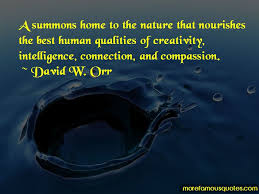 Western agriculture imposed on the island of Bali displaced an agricultural system of remarkable productivity that had thrived for a thousand years or more. Balinese agriculture was controlled by a system of temples presided over by a priesthood that orchestrated the distribution of irrigation water. The entire process was calibrated to the seasons, pests and differing crop needs by a complex calendar worked out over many centuries. That intricate, resilient, and highly productive system was displaced by the Green Revolution in the 1970s administered by experts who regarded agriculture as merely technical. The results were disastrous. Crops failed, pests multiplied and the society unravelled. The Balinese system of agriculture had been a remarkable blend of religion with hydrological and biological management. The imposition of technocratic western agriculture undid in a few years what had taken hundreds of years to create largely because “the managerial role of the water temples was not easily translated into the language of bureaucratic control” (Lansing 1991, 127). Now much of that system based on Western science and agronomy has been dismantled. But how can a system based on superstition work where one purportedly based on science does not?
Western agriculture imposed on the island of Bali displaced an agricultural system of remarkable productivity that had thrived for a thousand years or more. Balinese agriculture was controlled by a system of temples presided over by a priesthood that orchestrated the distribution of irrigation water. The entire process was calibrated to the seasons, pests and differing crop needs by a complex calendar worked out over many centuries. That intricate, resilient, and highly productive system was displaced by the Green Revolution in the 1970s administered by experts who regarded agriculture as merely technical. The results were disastrous. Crops failed, pests multiplied and the society unravelled. The Balinese system of agriculture had been a remarkable blend of religion with hydrological and biological management. The imposition of technocratic western agriculture undid in a few years what had taken hundreds of years to create largely because “the managerial role of the water temples was not easily translated into the language of bureaucratic control” (Lansing 1991, 127). Now much of that system based on Western science and agronomy has been dismantled. But how can a system based on superstition work where one purportedly based on science does not?
Designer Victor Papanek once identified the Inuit people of northern Alaska as the best designers in the world. They are, he believed, “forced into excellence by climate, environment, and the cultural baggage they carry with them” (Papanek 1995, 223). Living in a spare environment frozen through much of the year, the Inuit people have had to develop acute powers of observation, memory, and senses. They can repeat a long trek using nothing more than the memory of the same journey made years before. With eyes closed they can draw accurate maps of their coastline. And their best maps drawn long ago rival the best maps we can make with satellite data. Their homing sense resembles that of animals that can find their way home through adverse conditions. They make little distinction between space and time. They observe details with keenness lost to Western people. Can design ingenuity be bred into a culture by adversity?
Such examples reveal the importance of the relation between culture and the long-term human prospect in particular places. There are, of course, many other examples, such as Helena Norberg-Hodge’s (1992) study of the impact of westernization on the people of Ladakh and Gary Nabhan’s (1982) study of the Papago peoples of the desert southwest. The history of settled people in many places reveals the fact that culture and ecology of particular places have often been joined together with great intelligence and skill. The results, however imperfect, are habitats in which culture and nature have flourished together over many generations. They offer clues about how the human enterprise has, under some conditions, been sustained and what might be required to extend the life of our own.
Having been shaped by a century or more of cheap oil, industrialism, and hyperindividualism, we have a difficult time understanding what might be learned from such seemingly archaic examples. Yet as tourists we are drawn in large numbers to places like Amish country or Devon to snap a few photographs and after a brief visit return to other places that are not nearly as wholesome and to live lives far more hectic. We seldom see any relation between the two. What can be learned from well-used landscapes and settled societies wherever they exist is the importance of local culture as the mediator between human intentions and nature. Design for settled peoples is more than the work of a few heroic individuals. The process by which cultures and communities evolve over long periods of time in particular places is manifest not so much in discrete and spectacular things as it is in spectacular monuments like pyramids, glittering office towers, and shopping malls that signals the intention of people to settle in and stay a while. Design in such places is a cultural process extending over many centuries that has certain identifiable characteristics.
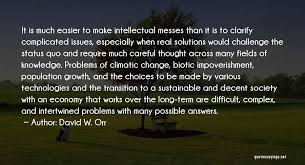
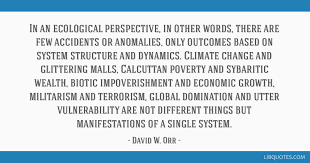 In contrast to the frenetic pace of industrial societies, settled cultures work slowly, rather like “a patient and increasingly skilful lovemaking the (persuades) the land to flourish” (Hawkes 1951, 202). Moreover, settled cultures seldom exceed what can be called a human scale. They persist mostly, but not exclusively, on local resources. In Devon, most houses and barns are made from local timber and stone and roofed with local slate or thatch. Fences are grown as hedgerows over centuries. In Amish country, barns and houses are still built from local timber by the community in barn raisings. The culture is mostly powered by sunshine in the form of grass for animals and by wind for pumping water. Settled cultures grow most of their food. They provide their own livelihood. To their young they impart the skills and aptitudes necessary to live in a particular place, not the generic job skills necessary for the anywhere-and-everywhere industrial economy. Instead of individual brilliance, design results from an intelligence that is deeply embedded in the culture.
In contrast to the frenetic pace of industrial societies, settled cultures work slowly, rather like “a patient and increasingly skilful lovemaking the (persuades) the land to flourish” (Hawkes 1951, 202). Moreover, settled cultures seldom exceed what can be called a human scale. They persist mostly, but not exclusively, on local resources. In Devon, most houses and barns are made from local timber and stone and roofed with local slate or thatch. Fences are grown as hedgerows over centuries. In Amish country, barns and houses are still built from local timber by the community in barn raisings. The culture is mostly powered by sunshine in the form of grass for animals and by wind for pumping water. Settled cultures grow most of their food. They provide their own livelihood. To their young they impart the skills and aptitudes necessary to live in a particular place, not the generic job skills necessary for the anywhere-and-everywhere industrial economy. Instead of individual brilliance, design results from an intelligence that is deeply embedded in the culture.
Settled cultures tend to limit excess in a variety of ways. Showiness, ego trips, great wealth, huge homes, hurry and excessive consumption are mostly discouraged, while cooperation, neighbourliness, competence, thrift, responsibility, and self-reliance are encouraged. I doubt that these traits are mentioned often, but they are manifest in the routines of daily life. It is simply the way things are. Western culture with its worship of egoism, doing your own thing, consumption, the cult of wealth, and keeping one’s options open is simply incomprehensible from the viewpoint of settled people. Whatever their particular theology, settled cultures limit the expression of the seven deadly sins of pride, envy, anger, sloth, avarice, gluttony and lust simply because these vices make living in close quarters difficult if not impossible. In western culture, as Lewis Mumford (1961, 346) once noted, the deadly sins have mutated into “virtues” that feed economic obesity. When the two cultures have clashed, settled people have regarded industrial people as seriously deranged. But more often than not settled people are either subsequently seduced by materialism or swept away by the sheer power of the more aggressive culture.
Settled cultures, without using the word “ecology,” have designed with ecology in mid because to do otherwise would bring ruin, famine, and social disintegration. Out of necessity they created harmony between intentions and the genius of particular places that preserved diversity both cultural and biological capital; utilized current solar income; created little or no waste; imposed few unaccounted costs; and supported cultural and social patterns. Cultures capable of doing such things work slowly and from the bottom up. There is no amount of individual cleverness that could have created the intricate cultural patterns that have preserved the landscape of Devon or grown rice in Bali for millennia, not any that could have created a culture as stable and non-destructive as that of the Amish. On the contrary, these evolved as a continual negotiation within a community and between the community and the ecological realities of particular places. Such cultures are not the result of scientific research so much as continual trial and error at a scale small enough to give quick feedback on cause and effect. Ecological design, then, requires not just a set of generic skills but rather the collective intelligence of a community of people applied to particular problems in a particular place over a long period of time.
Ecological design at the level of culture resembles the structure and behaviour of resilient systems in other contexts in which feedback between action and subsequent correction is rapid, people are held accountable for their actions, functional redundancy is high, and control is decentralized. At a local scale, people’s actions are known and so accountability tends to be high. Production is distributed throughout the community, which means that no one individual’s misfortune disrupts the whole. Employment, food, fuel, and recreation are mostly derived locally, which means that people are buffered somewhat from economic forces beyond their control. Similarly, the decentralization of control to the community scale means that the pathologies of large-scale administration are mostly absent. Moreover, being situated in a place for generations provides long memory of the place and hence of its ecological possibilities and limits. There is a kind of long-term learning process that grows from the intimate experience of a place over time of the kind once described by English wheelwright George Stuart ( (1923) 1984, 66) as “the age-long effort of Englishmen to fit themselves close and ever closer into England.”
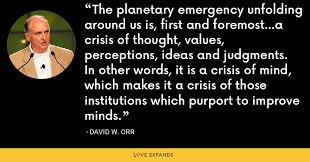
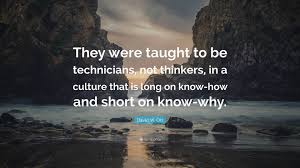 Beneath what we can see in settled cultures, there is a deeper worldview that we can barely comprehend. In contrast to the linear thinking characteristic of Westernized people, Native American cultures, for example, had a more integrated view of the world in which they lived. In Vine Deloria’s words, “The traditional Indian stood in a circle and brought everything together in that circle. Today we stand at the end of a line and work our way along that line, discarding or avoiding everything on either side of us” (1999, 257). There was, (and for some, still is) a view that all that exists is bound in a kind of supportive kinship. These relationships imposed responsibilities on humans to perform tasks the upheld the “basic structure of the universe” and ensured that all life forms were treated with respect and dignity (ibid., 131). Humans were intended to live “as relatives” with all animals and learn from them (ibid., 237). “Apart from participation in this network, “Deloria says, “Indians believe a person simply does not exist” (ibid., 132).
Beneath what we can see in settled cultures, there is a deeper worldview that we can barely comprehend. In contrast to the linear thinking characteristic of Westernized people, Native American cultures, for example, had a more integrated view of the world in which they lived. In Vine Deloria’s words, “The traditional Indian stood in a circle and brought everything together in that circle. Today we stand at the end of a line and work our way along that line, discarding or avoiding everything on either side of us” (1999, 257). There was, (and for some, still is) a view that all that exists is bound in a kind of supportive kinship. These relationships imposed responsibilities on humans to perform tasks the upheld the “basic structure of the universe” and ensured that all life forms were treated with respect and dignity (ibid., 131). Humans were intended to live “as relatives” with all animals and learn from them (ibid., 237). “Apart from participation in this network, “Deloria says, “Indians believe a person simply does not exist” (ibid., 132).
The idea that humans are embedded in a network of obligation and are kin to all life explains why settled cultures often regarded economics as a kind of gift relationship. “In most Indian communities in the old days the most respected person was one who gave freely of physical wealth, who showed a concern for the unfortunate, and who allowed weaker members of the community to rely on him/her” (Deloria 1999, 132). The essence of the economy is the simple and profoundly ecological idea that “the gift must always move” (Hyde 1983, 4). Tribal people often evolved complicated ceremonies, like the potlatch of the Native American tribes of the North Pacific, in which wealth was given away, destroyed, or discarded. Beneath such customs is an ecological view of the world that involves understanding “that what nature gives to us is influenced by what we give to nature” (Deloria 1999, 19). When wealth is no longer regarded as a gift to be passed from person to person, then and only then does scarcity appear.
Such relationships were not religious abstractions, but central to the way Native Americans related to the places in which they lived. They made no clear distinctions between themselves physically and the land in which they dwelled. Land contained the memory of past deeds and the spirits of their ancestors. Settled people have always known where they would be buried and with whom. “Our memory of land is a memory of ourselves and our deeds and experiences,” in Deloria’s words (1999, 253). We who regard land as a commodity to be bought and sold or as a resource can scarcely comprehend such a view. Our lack of comprehension is, in the view of tribal people, a mark of our adolescence and immaturity.
This book is not an argument to return to some mythic condition of ecological innocence. No such place ever existed. It begins, however, with an acknowledgement that we have important things to re-learn about the arts of longevity – what is now called “sustainability” – from earlier cultures and other societies. Many of those cultures appear to us as quaintly archaic if not utterly incomprehensible. But in the larger sweep of time, our emphasis on economic growth, consumption, and individualism will be even less understandable to subsequent and, one hopes, wiser generations. Carrying out the Great Work of making an ecologically durable and decent society will require us to confront the deeper cultural roots of our problems and grow out of the faith that we can meet the challenge of sustainability without really changing much. The evidence, I think, shows that we will have to change a great deal and mostly in ways that we will come to regard as vastly better than what exists now and certainly better than what is in prospect.

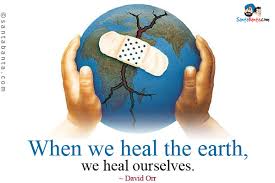 This is a design challenge like no other. It is not about making greener widgets but how to make decent communities that fit their places with elegant frugality. The issue is whether the emerging field of ecological design will evolve as a set of design skills applied as patchwork solutions on a larger pattern of disorder or whether design will eventually help to transform the larger culture that is badly in need of a reformation. I hope for the latter. Green consumerism or even greener corporations are Band-Aids on wounds inflicted by economy grown too indifferent to real human needs and pressing problems of long-term human survival. Corporations certainly need to be improved, but the larger design problem has to do with the structure of an economy that promotes excess consumption and human incompetence, concentrates power in too few hands, and destroys the ties that bind people together in community. The problem is not how to produce ecologically benign products for the consumer economy, but how to make decent communities in which people grow to be responsible citizens and whole people.
This is a design challenge like no other. It is not about making greener widgets but how to make decent communities that fit their places with elegant frugality. The issue is whether the emerging field of ecological design will evolve as a set of design skills applied as patchwork solutions on a larger pattern of disorder or whether design will eventually help to transform the larger culture that is badly in need of a reformation. I hope for the latter. Green consumerism or even greener corporations are Band-Aids on wounds inflicted by economy grown too indifferent to real human needs and pressing problems of long-term human survival. Corporations certainly need to be improved, but the larger design problem has to do with the structure of an economy that promotes excess consumption and human incompetence, concentrates power in too few hands, and destroys the ties that bind people together in community. The problem is not how to produce ecologically benign products for the consumer economy, but how to make decent communities in which people grow to be responsible citizens and whole people.
The essays that follow aim to broaden the concept of ecological design, explore various pathologies that prevent it, and sketch the educational implications of design. In the final section the essays lay out a standard for design that is oriented to generosity in the large sense of the word, the preservation of wildness and wilderness, and the design of a culture that protects its children.

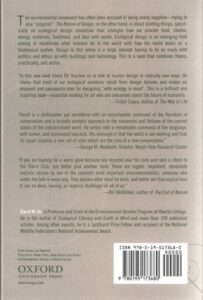
One thought on “The Nature of Design: Ecology, Culture, and Human Intention”